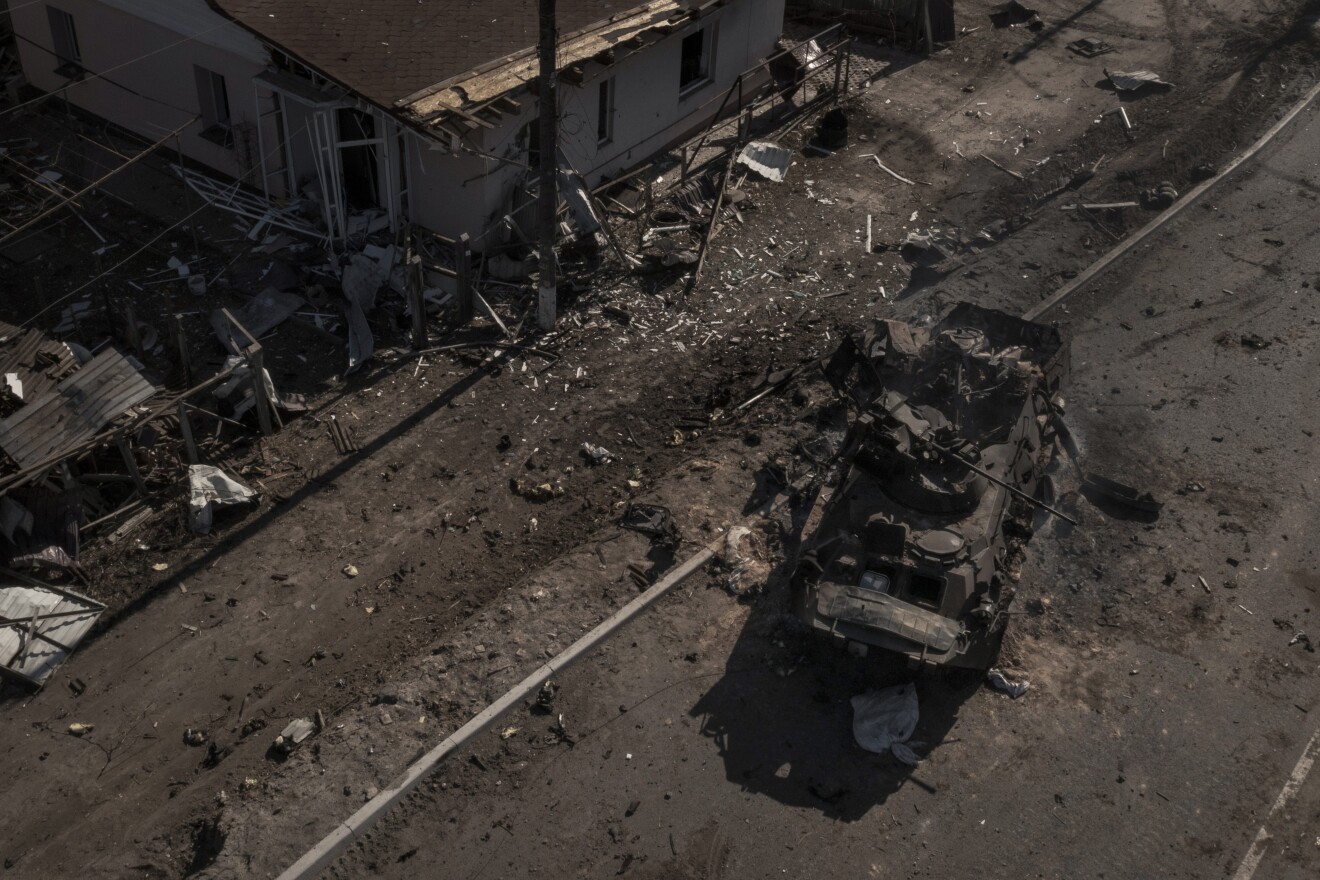As the war in Ukraine unfolds, many people are watching it on their phones. Social media is awash in photos, videos and satellite images. But some experts worry that the picture painted by these online posts is not always accurate. Here are some tips to guide you as you navigate through the flood of online information about Ukraine.
Satellites are not all-seeing
Images from satellites are shaping our understanding of this conflict like never before. They have spied Russian bases and cataloged the destruction caused by Russia's brutal attacks on Ukrainian cities.
But satellites can't do it all.
Imaging satellites travel around the Earth from south to north every 90 minutes or so, photographing a ribbon of the land as they go. "You're going by really fast, and you're seeing things really quickly," says Robert Cardillo, a former director of the U.S. National Geospatial-Intelligence Agency and now a senior executive at the commercial company Planet Labs.
That means any given satellite can take a picture of a particular place only once a day, and the higher the resolution of the satellite, the less area on the ground it can image.

All this makes satellites good at looking at a known location, like a city or an air base, but there's still plenty they can miss: particularly troops on the move. Moreover, if it's overcast, optical imaging satellites can't see anything at all through the clouds.
Planet Labs operates over 200 satellites so it can check a spot on the Earth multiple times a day. Other companies have their own sets of satellites. It's an unprecedented time for civilian imaging from space, Cardillo says. But the technology is still far from the unblinking eyes that are usually depicted in the movies.
Not everything you see may be real
On Wednesday, a "deepfake" video showed Ukrainian President Volodymyr Zelenskyy calling on soldiers to lay down their weapons.
A deepfake of Ukrainian President Volodymyr Zelensky calling on his soldiers to lay down their weapons was reportedly uploaded to a hacked Ukrainian news website today, per @Shayan86 pic.twitter.com/tXLrYECGY4
— Mikael Thalen (@MikaelThalen) March 16, 2022
The video, which was heavily manipulated, "is not very well done," said Sam Gregory of human rights group Witness, which specializes in detecting inauthentic media in crises. Nevertheless, the emergence of this video points to potential problems, in particular a "so-called liar's dividend, where it's easy to claim a true video is falsified and place the onus on people to prove it's authentic," Gregory said.
Outright fakes are not always needed. Often images are stolen from earlier wars or other parts of the world and relabeled. For example, a photo of an injured child was circulated at the start of the conflict. It was taken several years earlier in Syria.
In general, experts say the best idea is to stop before punching the share button and ask questions of what you're seeing: What's the source? Are other people reporting the same thing? And does it feed into biases you may already have?
Social media during a war is like social media the rest of the time
Hundreds of videos and photos are being posted each day, but most people are just seeing the handful that get the most likes and shares.
And just because something is upvoted doesn't make it accurate. Take, for example, a TikTok video of an attractive woman showing how to start a Russian armored vehicle.
The video has over 7 million views. "It was depicted as this [vehicle] has been, you know, taken by Ukrainian forces or resistance," says Rita Konaev at Georgetown University's Center for Security and Emerging Technology. "That's not what it was."
According to a fact check by Reuters, the woman is a Russian auto mechanic and vlogger. She filmed herself about a year before the invasion driving the armored vehicle for fun in Russia.
"Even though that is not something significant, I think it tells part of a broader story about the type of things that get amplified," Konaev says.
The fun how-to-drive-an-armored-vehicle video gets lots of likes and shares, but that's because it's fun to watch, not because it's true.
Remember you're seeing just a small part of the picture
Social media likes simple, bite-size stories. But this war is a lot more complicated.
"You could see a TikTok video showing 10 destroyed Russian tanks, but 10 tanks is only a small sample of what the Russians have," says Jeffrey Lewis, a professor of arms control at the Middlebury Institute of International Studies at Monterey.

Professional scholars like Lewis spend hours trying to match battle damage videos to satellite imagery and other reports. "It's a lot more complicated than just looking at your phone," he says.
Konaev says a real risk is that people fill in the gaps with their own biases. When a video of a few Russian soldiers surrendering goes viral, "it starts leading to these narratives about, you know, massive desertion, mutiny — Russian troops are about to turn around."
That, frankly, doesn't seem to be the case.
Konaev understands why people are seeking out information about the war online. "These bits of information do give you a sense of control in a moment of utter chaos around you," she says. Just remember: There will never be a single post, article or Twitter thread that can truly capture all of what's happening in Ukraine.
NPR's Bobby Allyn and Shannon Bond contributed to this report. contributed to this story
Copyright 2023 NPR. To see more, visit https://www.npr.org.





